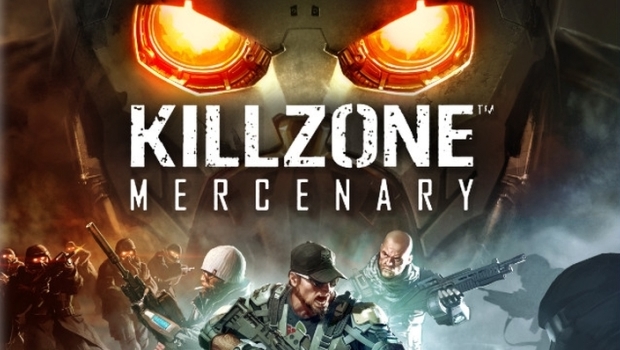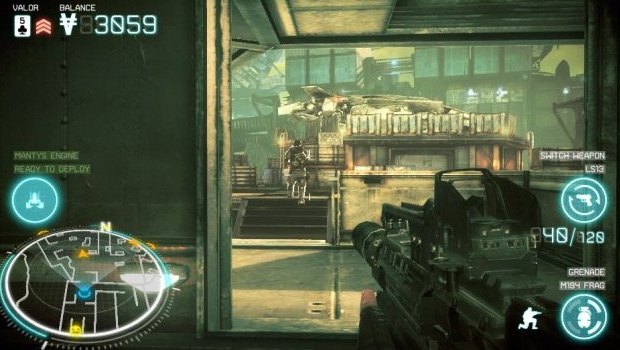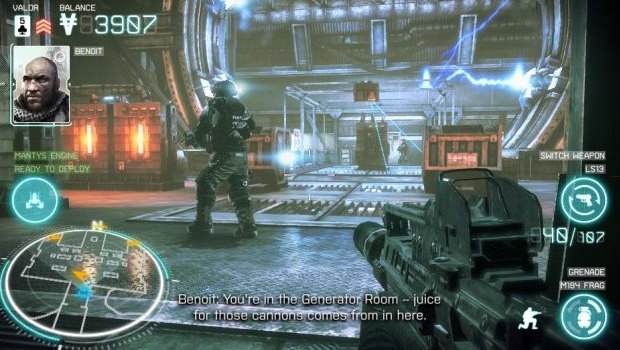The Playstation Vita may be becoming the indie-station, but there are still some AAA franchises heading to Sony’s handheld system. One of those is a Sony exclusive franchise which didn’t particularly overwhelm me with job the last time it came to their handheld (at the time, the PSP). But Sony is covering its tracks and making me forget about that instance with their latest entry in the Killzone franchise, Killzone: Mercenary. Being as I was underwhelmed with their last shooter on the Vita, I was a little worried how Killzone would make the transition. But, much like my time with Killzone 3 (which I also had my doubts on), I walked away surprised and pleased with Mercenary.
Killzone: Mercenary comes armed with both a single-player, chapter-based campaign and a solid multiplayer component. The single-player plays out in what the game refers to as contracts. Each chapter, or contract, gave me a compact version of what one would expect from a console Killzone game. The levels lasted roughly 30 minutes each, and had a variety of objectives to complete during them, though most of them were “go to objective quietly if possible, stealthily kill guards on way, interact with objective, defend objective”. Of course, the objective always made sense with the main plot; me playing a mercenary and being hired to do something to fight off the Helghan.
Through the course of each chapter, amazingly enough (especially since I don’t generally like stealth games), my favorite part was sneaking around melee-attacking the enemies. It felt strange at first, as that was tied to the Triangle button, but with time it felt very rewarding. Counteracting this awesome feeling, sadly, is the implementation of swiping to finish the attack. Triangle just initiates the action, the touch screen finishing it felt forced and tacked on. Despite the awkward controls, it was trying to sneak through as much of the level as possible that made me enjoy the game the most. The only penalty for being caught was a small gun fight with a cluster of enemies.
On the other hand, the puzzles (I use that term loosely, mind you) that unlock doors were a good use of the touch screen. The screen would zoom down to my wrist computer gadget thing (that’s a technical term) and I had to match symbols to complete the pattern. None of them were complicated, and they felt a little out of place in the action, but it didn’t seem as gimmicky as the melee attacks. Another unique device-driven feature is using the rear touch pad to run. Double tapping the rear area will initiate running, which is really intuitive and makes up for the lack of an L3 or second trigger.
One particular mission, I swooped in with a gliding suit and landed in a tram car. My radar showed a Helghan troop pacing right upstairs. I snuck up the stairs, stabbed a knife in his neck and hit the objective. Running down the stairs, I stopped at the door and crouched as it opened. I saw four guards and began to worry. This is usually where I screw up, I told myself. But deftly, I snapped the neck of the first guard, ran and slid into the second guard, stabbing him in the face brutally, and then quietly picked off the last two snipers with my silenced SMG. Man, that felt good. It didn’t usually go down that fluidly, but when it did, it was a rush of joy and adrenaline.
To make the single-player last longer, after completing one of the eight contracts I opened up additional objectives. Each contract has Precision, Covert, and Demolition sub-contracts to complete. Precision has objectives like “headshot x amount of enemies”, Covert wants the player to do things like “backstab x amount of enemies”, and Demotion will include objectives that use..you guessed it..explosives. The tricky part is that certain weapons are needed to even attempt these missions.
Why is it tricky, you ask? Not every weapon is available to use whenever you want. Playing through the contracts (or multiplayer), I earned Vektra dollars which could then be spent at an Arms Dealer to load up on ammo, buy gear, or just change my weapons. Sadly, you can’t equip weapons you buy with goodies like scopes: what you buy is what you get. That’s probably one of the only things that I would have liked to have seen, was a little more personalization. I would have loved to custom fit my SMG with an extended clip and maybe something to tighten the spread of bullets. That seems to be how the genre has been moving, into a progressively customizable experience, and Mercenary doesn’t scratch that itch at all.
Competitive multiplayer is fun, though since I was reviewing this with early review code I only got to play a handful of games. But that was still enough to know that what Mercenary does well: throw eight people into a map and let them have fun. The maps are small, fitting for the device, but still enjoyable to those of all styles of play. Deathmatch was my favorite, as it was a free-for-all mode and with eight people, it felt akin to playing a console game online. The 4v4 games of team deathmatch and the Killzone 3 mode, Warzone, were still fun.
Lacking a progression system is something I tend to dislike in shooters. I grow bored of playing for long sessions if I am not constantly earning something, which you can blame on Call of Duty. Either way, the absence of such a system is a great fit for the Vita. When I sit down with Killzone: Mercenary to play online, it’s simply to take a break from something else, not sit down for a few hours and grind through a dozen unlocks. Don’t get me wrong: I would probably enjoy Killzone: Mercenary all the more if it had a progression system, but it is still very fitting to simply not have the mechanic in the game at all. It felt really good to pop into a few games, scratch that competitive itch, and transition to something else on the PS3 or PC. I’ve been using this term a lot lately with Vita reviews, but it’s bite-sized gaming in the multiplayer space, whereas if it had a progression system, it would just consume my poor life which is something I don’t particularly need or want from my handheld gaming system.
Killzone: Mercenary, to its very core, feels and plays like a console game built for the Vita and not a port. It looks phenomenal, plays great, and has some serious replayability for people who are ready for a AAA-franchise on the Vita.
This review was based on gameplay for the Playstation Vita with material provided by the publisher. For more on our review process, please click here.



